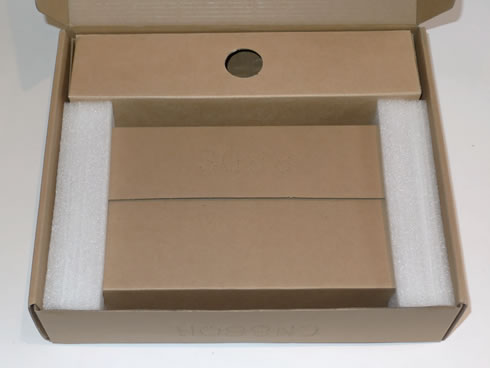1. Meet the Inno3D GTX 460 1GB OC
Nvidia's GTX 460 GF104 line is the second version of the Fermi GF100 cores targeted for the midrange mainstream market. Positioned between the GTX 470 and the GTX 465 especially, the card is equipped with a the GF104 GPU specialized toward gaming and video editing. Compared to the GTX 465, the GTX 460 consumes less power and features less transistors.
The GF104 has two Graphics Processing Clusters (GPCs) containing 4 SMs each, for a total of 8 SMs adding up to 384 CUDA cores. However, the GeForce GTX 460 is shipped with 1 of the 8 SMs disabled, leaving it with 336 enabled CUDA cores. Despite the cut-down, Nvidia has made significant changes to the design of the SMs for GF104 and the Fermi architecture in general. The company has added superscalar dispatch abilities to GF104, NVIDIA has also made a number of other tweaks to the Fermi architecture for this GPU.
Today we have in our labs Inno3D's overclocked version of the Nvidia GTX 460, which also comes with 1GB of memory. We have already tested the Inno3D 460 768MB model and it's interesting to see where the new card stands in terms of performance compared to the GTX 465, the GTX 470 and also AMD's 5850 solution, which retails at the same price point.
The Inno3D GTX 460 1GB OC card comes pre-overclocked at 750MHz for the GPU, 1,500MHz for the 336 CUDA cores and an effective 3,800MHz for the 1GB GDDR5 frame buffer. Compared to NVIDIA's reference speeds - 675MHz, 1,350MHz and 3,600MHz, respectively - that's an average bump of nine per cent.
|
GeForce GTX 460 768MB (GF104) |
GeForce GTX 460 1GB OC (GF104) |
GeForce GTX
465 (GF100) |
GeForce GTX
470 (GF100) |
GeForce GTX
480 (GF100) |
Stream (Shader) Processors |
336 |
336 |
|
|
|
Core Clock (MHz) |
675 |
750 |
|
|
|
Shader Clock (MHz) |
1350 |
1350 |
|
|
|
Memory Clock (data rate MHz) |
3600 |
3600 |
|
|
|
Memory amount |
768MB |
1024 MB |
|
|
|
Memory Interface |
192-bit |
256-bit |
|
|
|
Memory Type |
gDDR5 |
gDDR5 |
|
|
|
- Package
The Ino3D GTX 460 1GB OC packaging is different than the company's 400 series of graphics cards. It has a reflective metallic look to it that refracts rainbows in the light. The top left, in capitalized gold lettering, states that this card is overclocked from the factory:

Opening the package reveals the typical cardboard box inside. This design uses two containers to separate and protect the pieces inside.

The supplied accessories include a software disc with both the drivers and applications. A DVI to VGA adapter is included, as well as a dual female Molex to male 6-pin PCIe adapter (the card requires dual 6-pin connection to run). The GTX 460 is protected in the standard translucent anti-static bag with a sticker warning against the dangers of static and proper handling, while also sealing the bag.

The dual-slot card measures just 8.25" (length). That's smaller than the ATI 5800s cards. The card should be installed into a PCI Express x16 slot:


A single SLI connector permits two-way GTX 460 action, and at 210mm in length, the card's the same size as NVIDIA's reference design.

Inno3D's card offers a pair of dual-link DVI ports and a mini-HDMI connector.
That's all for the packaging and the card's looks. We installed the card and fired up the GPU-Z utility, which confirms the card's basic specifications:
